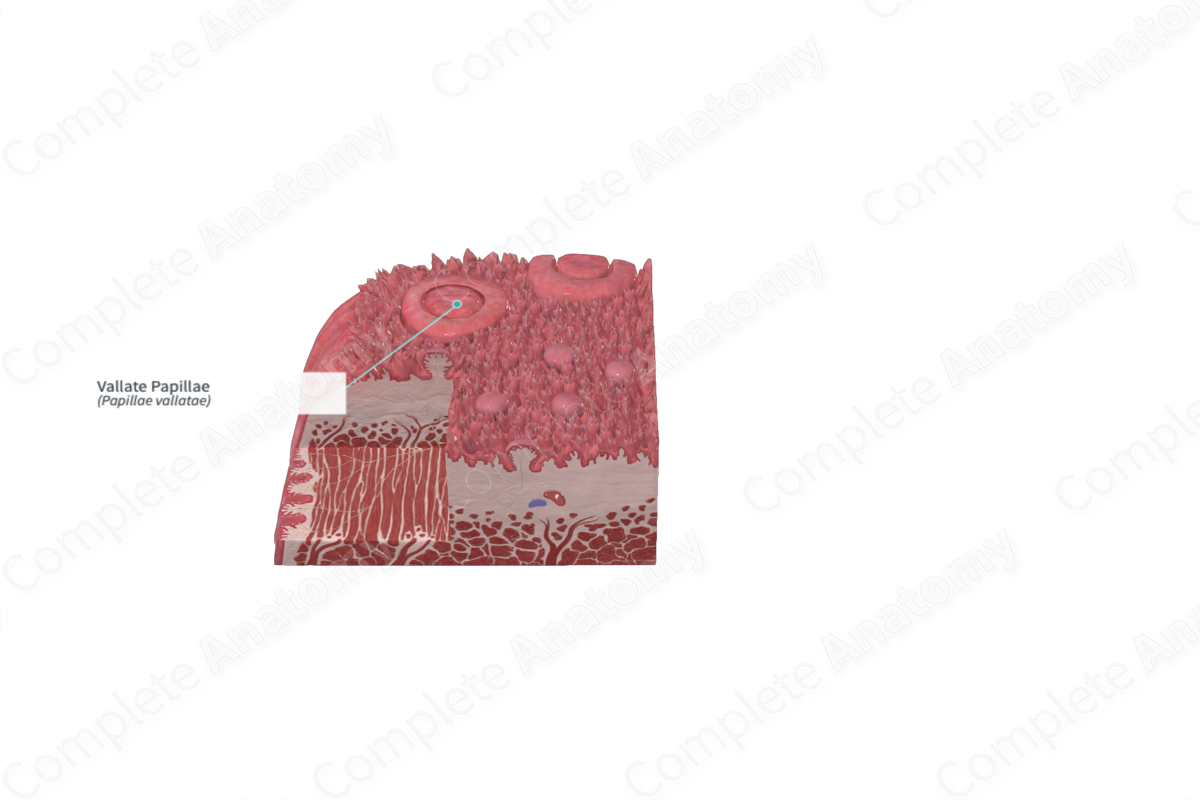
Quick Facts
The vallate papillae are the largest papillae of the tongue, 8 to 12 in number, arranged in the form of a V anterior to the sulcus terminalis of the tongue (Dorland, 2011).
Related parts of the anatomy
Structure and/or Key Features
The vallate papillae are both the largest in size and lowest in number. There is usually only 8–12 in total on the tongue surface. They are centrally located, directly in front of the terminal sulcus of the tongue, the boundary between the oral and pharyngeal regions of the tongue. These papillae are broader at their apex, and they are encircled by marginally raised mucosal mounds (hence, they are also known as the circumvallate papillae). In between the papilla and the mucosal mound is a groove. The taste buds are located in the walls of the papilla, while several salivary glands open at the floor of the groove. The taste buds of the vallate papillae are innervated by the glossopharyngeal nerve.
Function
The vallate papillae are involved in savory taste detection (Ikeda, 2002).
References
Dorland, W. (2011) Dorland's Illustrated Medical Dictionary. 32nd edn. Philadelphia, USA: Elsevier Saunders.
Ikeda, K. (2002) New seasonings. Chem Senses, 27(9), 847-9.
